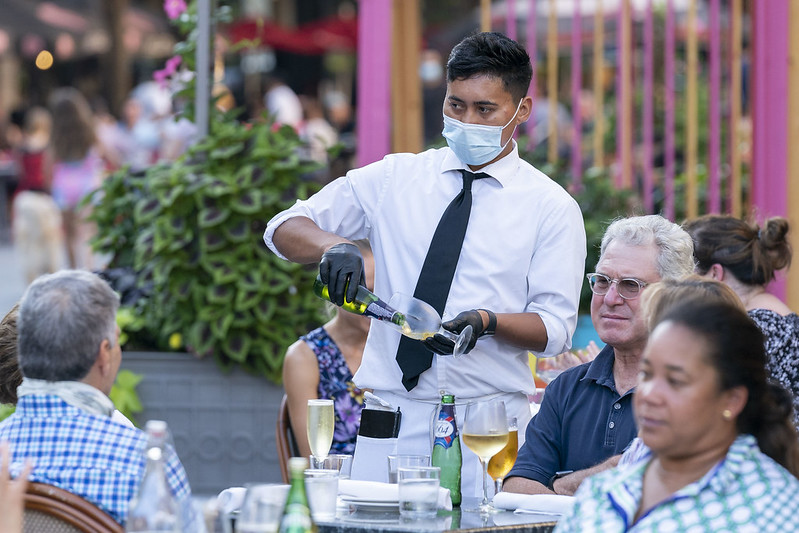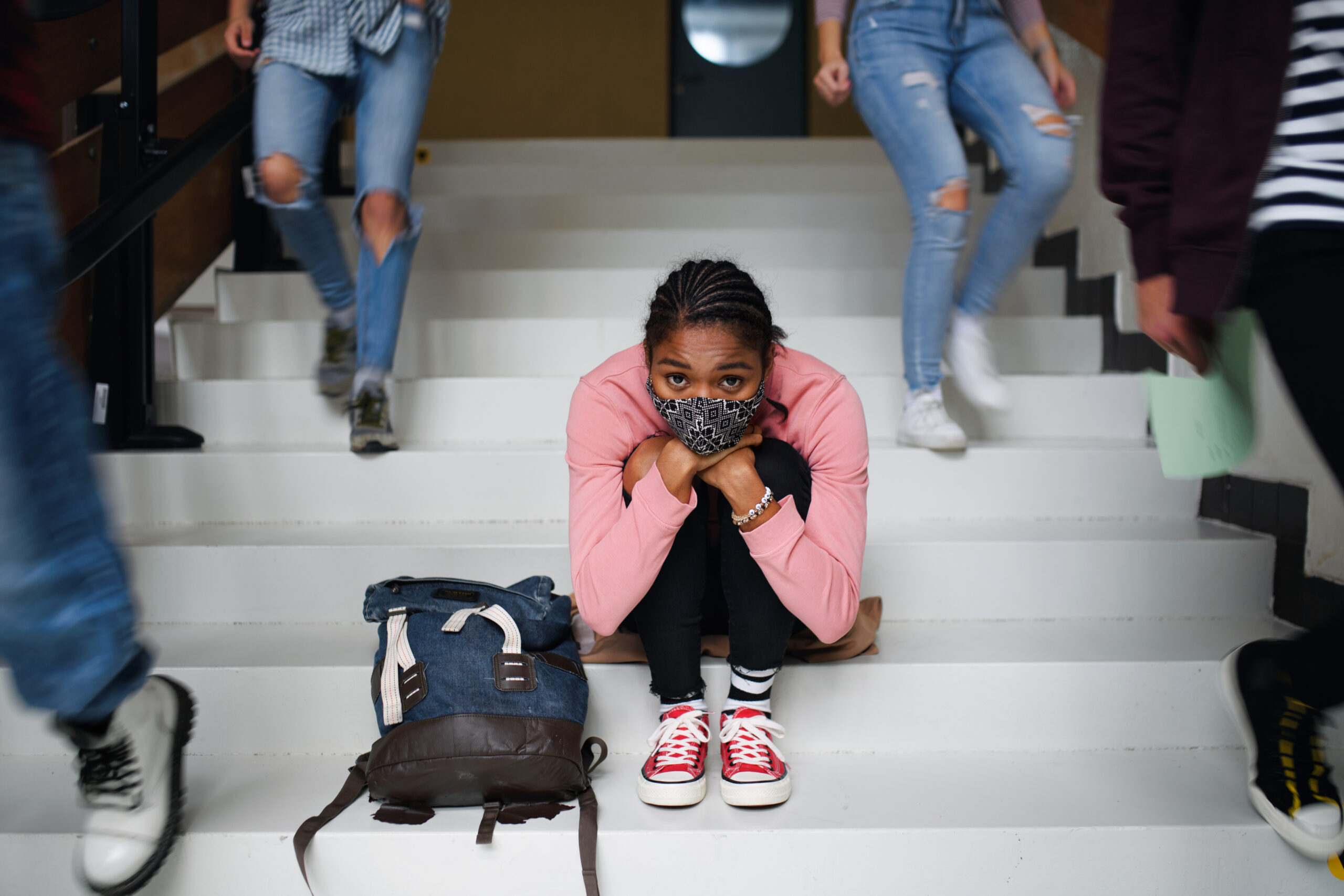A server refills a glass as patrons dine on a closed portion of Woodmont Avenue in Bethesda, Maryland, to accommodate outdoor dining as a result of the COVID-19 pandemic on August 29, 2020. Photo by Cory Hancock of Flickr.
By Carlos Martinez, Web Editor
It may not elicit a response quite as dramatic as being surrounded by an angry pitchfork-wielding mob, but coming out in support of California Gov. Gavin Newsome’s lifting the outdoor dining ban is still an unpopular position in many quarters.
So stab away. As serious of a threat to public health as the coronavirus still is, the economic peril that so many restaurant owners, and the people who work for them, are dealing with is too dire to continue restricting their businesses.
The initial shutdown order last March closed more than 30,000 restaurants in Los Angeles County. As far as numbers of employees who lost their jobs, there is no official number. You can do the math yourself by multiplying 30,000 by the amount of employees you think work at your favorite restaurant and then doubling it (to account for management, kitchen and other back-of-the-house staff you don’t see).
Since then, there has been a repetition of partial re-openings, a convoluted array of constant regulations, and who knows how much owners have spent trying to accommodate outside diners.
In early December, with cases spiking, the outdoor seating capacity was cut in half, and then just a few days later, with cases numbering more than 4,000 cases a day, all dining was banned in LA County. Until Newsom’s order, takeout and delivery were the only options.
Although the fear of another Covid wave fueled by a return to outdoor dining is recognizable, following the industry guidelines that were reviewed and approved by the California Department of Health and Cal/OSHA will help restaurants create a safer environment for patrons.
Even though not everyone is fond of eating Korean barbeque outdoors, outdoor dining has a lower risk of infection when compared to indoor dining.
“Eating outside is less risky than eating inside, if everybody is six feet apart and the wait staff are all wearing masks. That keeps the risk as low as it can be,” Dr. William Schaffner, a professor of preventive medicine and infectious diseases at Vanderbilt University School of Medicine, said in a CNN article.
As a former food prep and fry cook stuck in the limbo known as furlough, I know the festering feeling of helplessness that comes with struggling to find some sort of stable income during these unstable times.
With a restriction to solely handle take-out orders, restaurant owners are forced to minimize the amount of staff needed in order to reach the level of profit they need in order to have their doors open for another day. Nearly 17,400 jobs in the food and beverage industry were reported lost in November, with an unemployment rate of 13.8%, according to an article by CNBC.
Closer to home, California’s unemployment rate has increased by nine percent since many restaurants and other leisure businesses were forced to shut their doors as the state tried to control the spread of the virus, according to the Los Angeles Times.
According to Heidi Shierholz, a senior economist at the Economic Policy Institute, in an interview with Business Insider, millions of unemployed or furloughed workers face the challenge of finding a job with security from the pandemic; opting to take lower-paid positions in order to have some form of income.
“To get those jobs back, we have to have an economy that’s strong enough that people are opening new businesses to meet the demand for goods and services,” she said. “And that stuff just takes longer.”
Although restaurants have to comply with Covid-19 guidelines to provide a low-risk environment for everyone, diners have the responsibility to take part in overcoming the pandemic. With practices such as wearing a mask, washing your hands, sanitizing tables and picking up any trash left behind, outdoor dining will be able to stick around enough for workers to have financial security.



